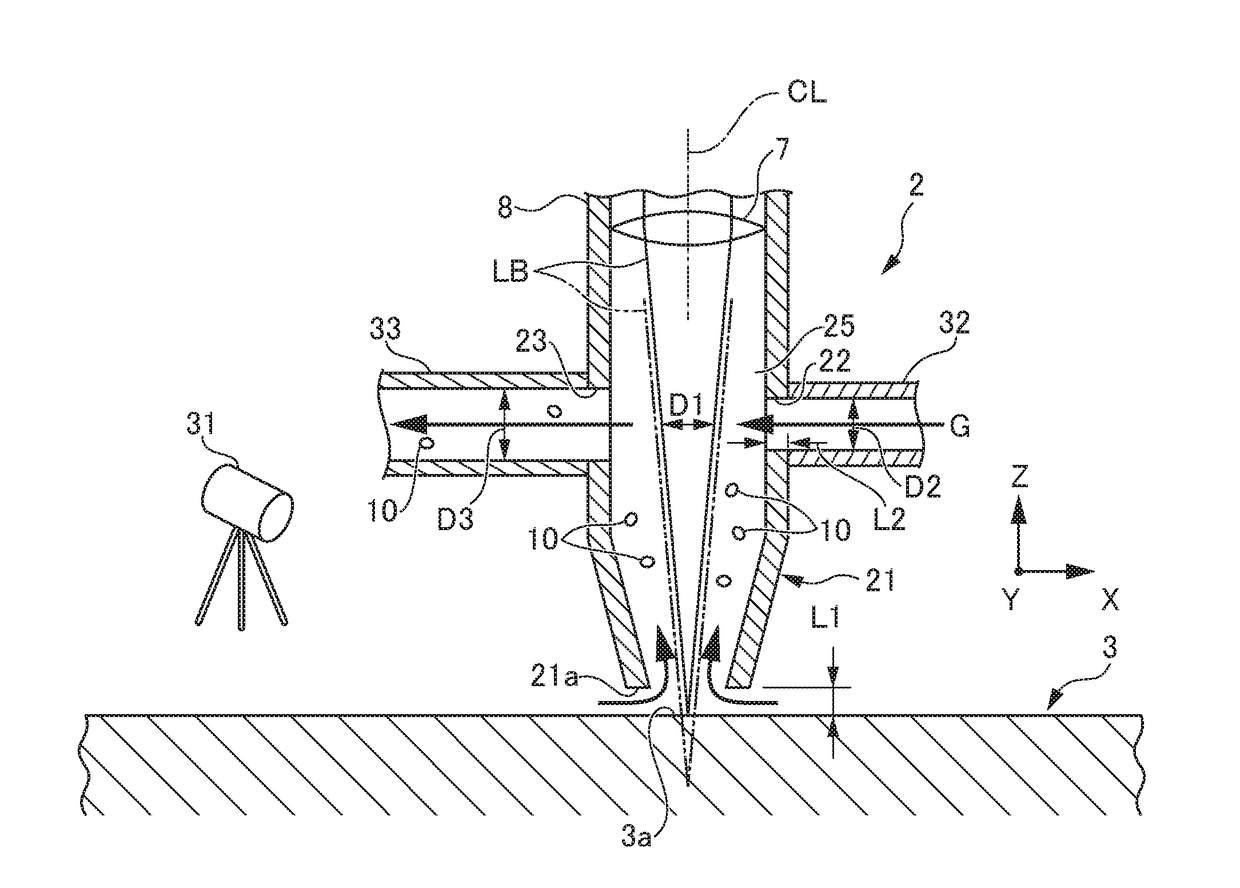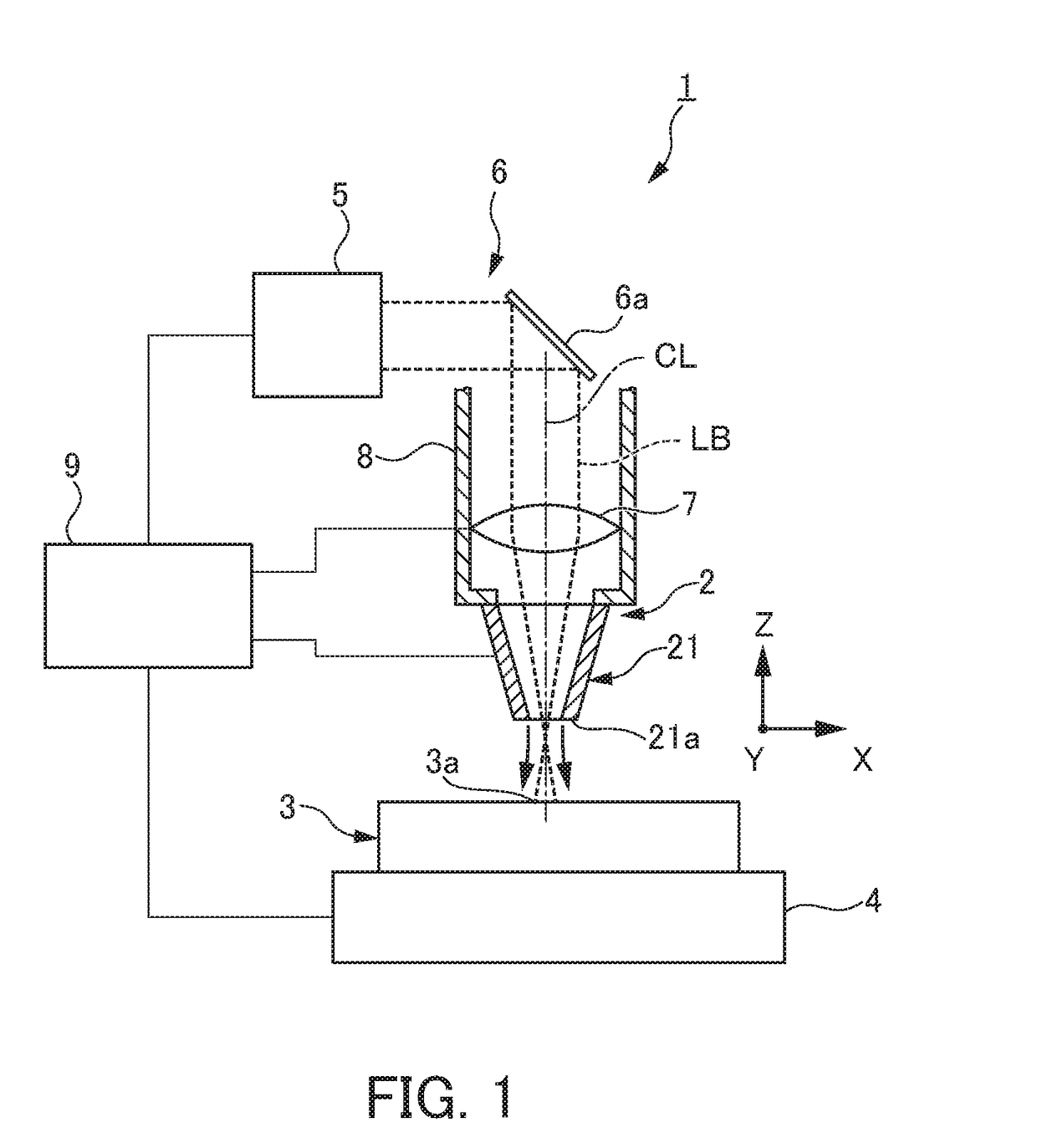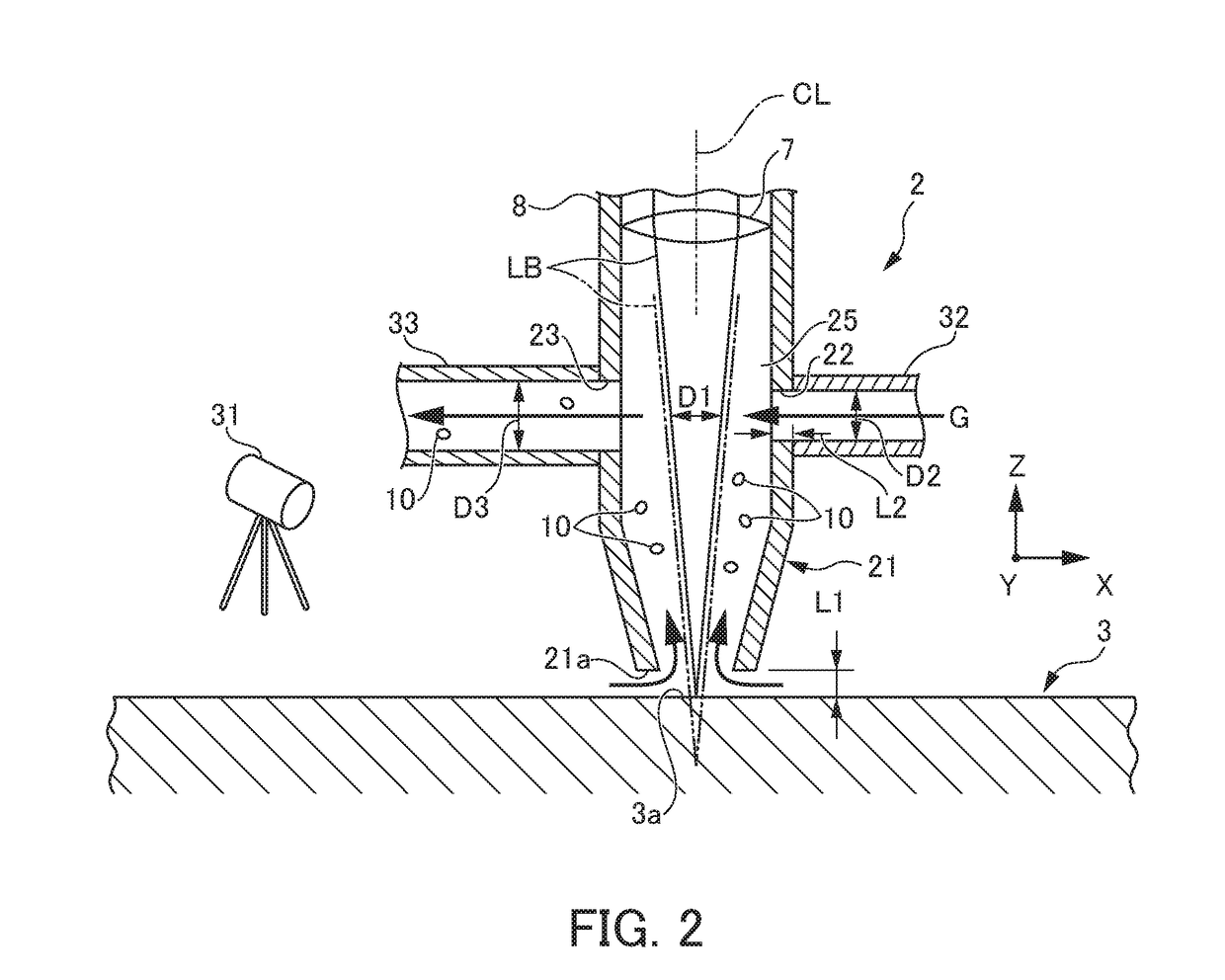Laser processing method
- Summary
- Abstract
- Description
- Claims
- Application Information
AI Technical Summary
Benefits of technology
Problems solved by technology
Method used
Image
Examples
example 1
[0057]Laser processing is performed to a workpiece of alumina having a thickness of 2 mm by the laser processing method according to the first embodiment described above, by using a carbon dioxide gas laser. As is clear from FIG. 3, the carbon dioxide gas laser (wavelength: about 10 μm) has the reflectivity to the alumina of about 20%, that is, the absorption rate of about 80%. As shown in FIG. 4, the alumina has the density of 3.9 g / cm3, the specific heat of 0.75 kJ / kg*K, the melting point of 1777K, and the boiling point of 2723K.
[0058]In consideration with these, the energy required for melting the workpiece, and the energy required for boiling the workpiece are calculated. That is, when it is assumed that a melting target portion of the workpiece is a cylindrical shape, a bottom surface (that is, a shape corresponding to a spot size of the laser beam) of the workpiece is a circle shape having the diameter of 0.5 mm, and the height (that is, a shape corresponding to a melting dept...
example 2
[0062]The laser processing is performed to a workpiece of alumina having the thickness of 2 mm, as similar to the embodiment 1 described above, except that the type of the laser is replaced from the carbon dioxide gas laser to the fiber laser. As is clear from FIG. 3, the fiber laser (wavelength: 1 μm) has the absorption rate to the alumina of about 8%, that is, 1 / 10 absorption rate of the carbon gas laser (see example 1). Thus, when the laser processing is performed by the same laser output, it takes. When the processing time takes longer, the risk that the base material is heated by heat conduction and cracks becomes higher. When the laser processing is performed by the same time, a laser having 10 times lager output needs to be prepared.
[0063]Then, in order to shorten the processing time, before the laser irradiation, an antireflection agent (“Black guard spray” produced by Fine Chemical Japan Co., LTD.) is sprayed to the surface of the workpiece to coat the antireflection coatin...
PUM
| Property | Measurement | Unit |
|---|---|---|
| Thickness | aaaaa | aaaaa |
| Height | aaaaa | aaaaa |
| Height | aaaaa | aaaaa |
Abstract
Description
Claims
Application Information
 Login to View More
Login to View More - R&D
- Intellectual Property
- Life Sciences
- Materials
- Tech Scout
- Unparalleled Data Quality
- Higher Quality Content
- 60% Fewer Hallucinations
Browse by: Latest US Patents, China's latest patents, Technical Efficacy Thesaurus, Application Domain, Technology Topic, Popular Technical Reports.
© 2025 PatSnap. All rights reserved.Legal|Privacy policy|Modern Slavery Act Transparency Statement|Sitemap|About US| Contact US: help@patsnap.com



